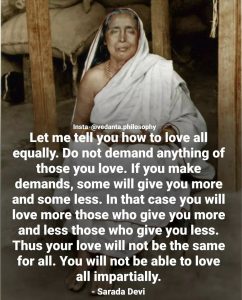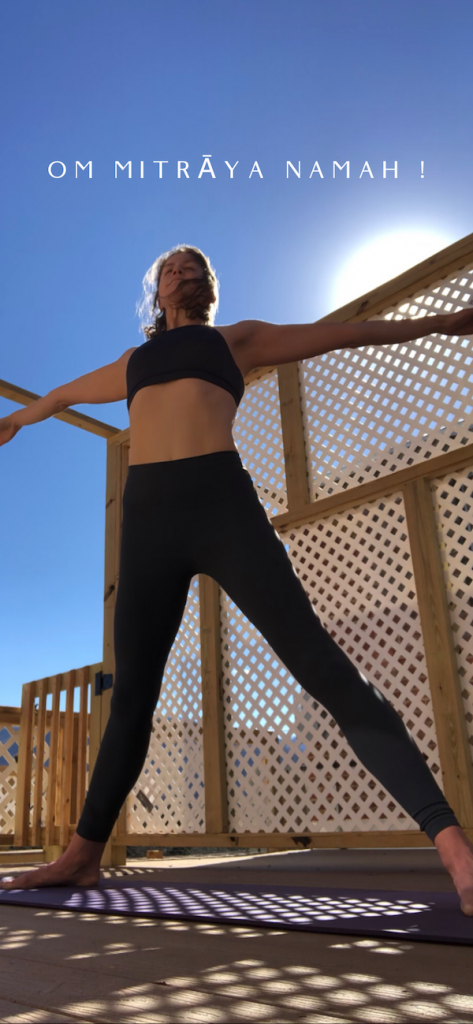The Great Vow and a very good friend.
“In all our relationships each one of us builds an image about the other and these two images have relationship, not the human beings themselves… The actual relationship between two human beings or between many human beings completely ends when there is the formation of images.”
– Jiddu Krishnamurti, Freedom from the Known

All this talk of Ahimsa… it’s a beautiful one. We all desire, in some way, to be treated kindly, with justice, with understanding and care. The promise of that beauty as a result of our own care for others is certainly a catalyst to take up the practice of ahimsa. Yet the mind is laden with impressions. Our relationships with the world is often filled with comparison instead of clarity. As Krishnamurthi hints above, our relationship with one another as it is now is run by fleeting images and grooves based on past impressions and our own desires. We may only know someone based on who we think they have been. Ahimsa is an easy choice when the impression our mind has formed about another is pleasing. But when it is uncomfortable or painful non-harm is a tough journey. That old adage: “hurt people, hurt people” may just hold some water. And yet, as Patanjali states…

- jati- species, caste, station
- desa-place
- kala-time
- samaya- circumstance
- anavacchinnah- without exception
- sarva- all
- bhauma- levels
- maha-great
- vratam-vow
“These (5 yamas) are the GREAT VOW (mahavratam) that should be practiced without exception to every species, people, place, time, circumstance and at all levels.”
This is no conditional promise, it’s quite the opposite. There is not a “yes, but” behind them. Yet, it is not the status quo, and upholding them is not only a challenging practice, it can also be a lonely path. This world and this age (the kali yuga) is often driven by corruption and greed and borders: A product of ignorance and fear. While there is beauty, and grace and love every day in the world- the dukha is real. These vows are important as they keep our mind from accumulating the effects of that external momentum towards the opposite (the vitarkas- harm, falsehood, excess, stealing etc) and from contributing to further division. Even in our own psychology there is conflict (saying one thing and thinking another for example). So we must have a way to re-route that path, even if the path is lonely. Can we uphold these ethical observances when it seems that kindness is actually the route less traveled? If we aim towards unconditional and abiding peace- then we must endeavor to try.
First, as mentioned before we have the tool of pratipaksa bhavanam: considering the alternative and allowing “just pause.” Again, we must consider that the impressions we’ve built took time to construct. To pave a new path we need to commit to an unknown (to us) trail and trust our tour guides (via agamah-through the written and oral testimony of those with no agenda/the great teachers). So then, what supports this practice of pause?
Give me attitude
Patanjali teaches in the Samadhi Pada (in the section on special practices to a clearer mind) the following.

- maitra: friendliness
- karuna: compassion
- mudita: appreciation
- upeksanam:indifference
- sukha: contented (sukhi: contented people)
- dukha: suffering (dukhi: those in pain)
- punya: virtuous
- apunya: non-virtuous
- visayanam: objects (people)
- bhavanatah: attitude
- citta: mind
- prasadanam: clarity
Here a more specific approach is taken to Pratipaksa Bhavanam with four suggested Bhavas (mental attitudes).
- Mitra Bhava: With happy people/beings cultivate friendliness towards them
- Karuna Bhava: With those in pain cultivate compassion
- Mudita Bhava: With those who are virtuous (always doing the right thing) cultivate appreciation
- Upeksha Bhava: With those who are non-virtuous (acting from ignorance) cultivate indifference
So often our minds are conditioned in other ways based on past actions and repetitive patterns. When we see someone who is incessantly happy we may not feel friendly. We may feel anger or frustration. Our own pain shines through and may prompt us to react negatively. When we meet someone who is in pain we may feel uneasy because it connects us with our own unresolved pain and so we may find a way to avoid rather than show compassion. This sutra helps us to recognize that and begin to shift our reactivity into awareness.
So when we are considering the opposite approach suggested in 2.33 the path is clarified in sutra 1.33. Interesting placement in each chapter, don’t you think? 😉
Make new/old friends
These bhavas also help us address the loneliness that observing yama can sometimes reveal. The world is fully of bumps and bruises, it can be a lonely road to pave a new path when your friend or family group does not, or when (as Krishnamurti suggests above) our projections of our friends and family impede true relationship. Yet, take mitra bhava for example: An attitude of friendless towards the happy ones. In the truest sense these Sukhis are the yogis! We look to sages like Patanjali and Iswara Krsna who have found the unconditional joy of resting in their true nature (tadah drastuh svarupe avasthanam). We befriend their words and writings as we study and practice. We contemplate the connection. These sutras are not just words on a page, they are threads of human experience and liberation throughout the course of many lifetimes. We are not alone! So many have been here before.
Nature is also a constant companion and guide. Ahimsa towards not just our fellow humans but all creatures and sources of life on this dear Earth are also important for the health of our body and mind. The Surya Namaskar mantra is a good reminder. When we practice Surya Namaskar and chant the sacred names of the Sun we are reminded of the qualities the sun provides that are reflected in the prana (life force) within. A feeling of Mudita bhava, or appreciation for the great teacher may arise.
- Om Mitraya namah: Salutations to the friend of all
- Om Ravaye namah: Salutations to the fast mover (sunrise, sunset -always new )
- Om Suryaya namah: Salutations to the divine
- Om Bhanave namah: Salutations to the bringer of light
- Om Khagaya namah: Salutations to the mover in space
- Om Pushne namah: Salutations to great nourisher
- Om Hiranyagarbhaya namah: Salutations to the golden womb (creator of life)
- Om Maricaye namah: Salutations to the radiant one
- OM Adityaya namah: Salutations to Aditya
- Om Savitre namah: Salutations to luminous one
- Om Arkaya namah: Salutations to the venerable one
- Om Bhaskaraya namah: Salutations to the great illuminator
The great friend, illuminator, support, sustainer. Reflected around and within.
We can also look to our fellow sadhakas (those also following the path of yoga) to know we are not alone. And (maybe, most importantly) endeavor to look within. When we experience happiness befriend it without reservation or attachment. When we are in pain, compassion. When we do something good and healthy for ourselves, appreciate the practice and it’s fuel. And when we are tempted to be unkind or act maliciously towards ourselves, flip that script. As Yajnavalkya teaches: Ahimsa encompasses the tenets of kindness, sincerity, forgiveness, compassion and self-love in our thoughts, words and deeds.
And so we can remember the sages, we can remember eachother, we can look to the great illuminator and friend in the sky reflected in our hearts and know that this Great vow is not in vain but is a firm foundation from which we illuminate our own mind, and move towards abiding peace. It may not be easy, but it is helping us to cultivate ease.
Om Shantih Shantih Shantih

See you tomorrow,
Jennifer
